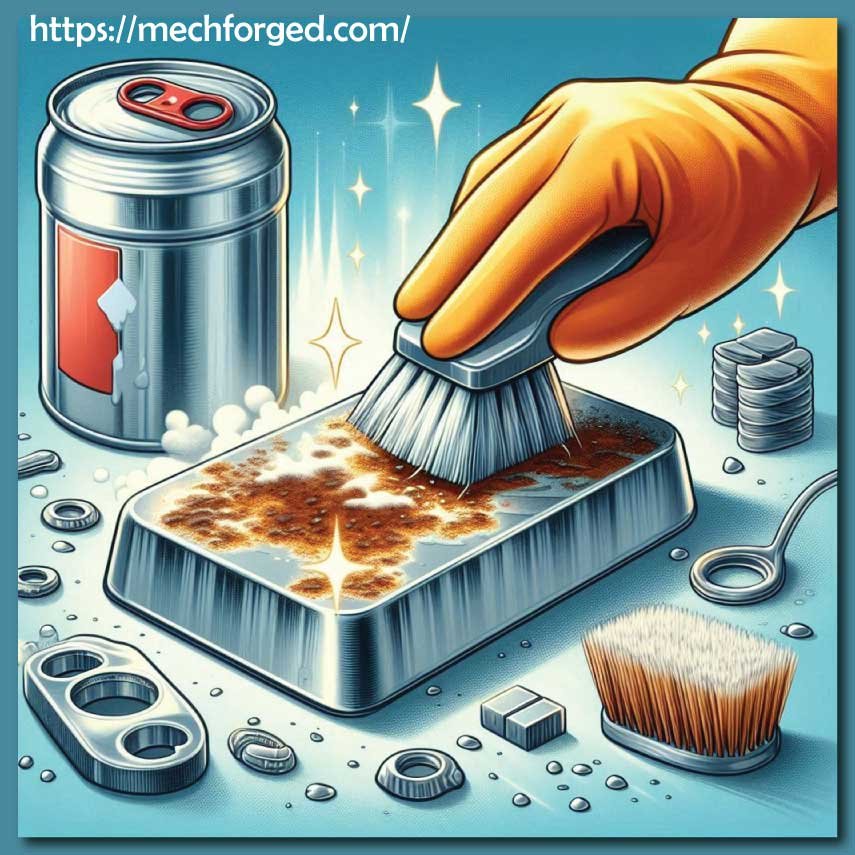To remove rust from stainless steel, you can follow a step-by-step process to restore its appearance and prevent further damage. Rust on stainless steel can be unsightly, but with the right methods, you can get rid of it effectively without damaging the metal surface. Here’s an expanded and detailed guide on how to remove rust from stainless steel:
1. Identify the Rust:
Begin by inspecting the stainless steel surface for any visible rust spots. Rust usually appears as reddish-brown or orange patches. Make sure to examine all areas of the stainless steel, including corners and edges, where rust is most likely to develop.
2. Prepare the Surface:
Before starting the cleaning process, it’s important to remove any loose debris or dirt from the surface. Use a damp cloth to wipe down the area and ensure that the surface is clean and ready for treatment. This helps avoid scratching the surface during the cleaning process.
3. Choose Your Method:
Baking Soda Paste: One of the gentlest and most effective methods is using a baking soda paste. Mix baking soda with a little water to form a thick paste. Apply this paste directly to the rust spots and let it sit for about 10 to 15 minutes. Baking soda is mildly abrasive, so it will help lift the rust without scratching the surface.
Commercial Stainless Steel Cleaner: If you have a stainless steel cleaner designed specifically for rust removal, follow the manufacturer’s instructions carefully. These cleaners are formulated to break down rust and restore the shine to stainless steel surfaces. They often contain chemical agents that can effectively treat more stubborn rust spots.
Vinegar or Lemon Juice Soak: For more stubborn rust, soaking the area in vinegar or lemon juice can be highly effective. Both vinegar and lemon juice contain natural acids that dissolve rust over time. Soak a cloth in vinegar or lemon juice and place it over the rust spots for at least 30 minutes. This allows the acid to break down the rust, making it easier to remove.
4. Scrub Gently:
After the paste has had time to work or the soaking process is complete, use a non-abrasive sponge or soft-bristled brush to scrub away the rust. Be sure to scrub gently, following the direction of the metal grain to avoid creating scratches. Never use steel wool or harsh abrasive pads, as they can cause deep scratches that are difficult to repair.
5. Rinse and Dry:
Once the rust has been scrubbed off, rinse the area thoroughly with clean water to remove any cleaning residue or leftover paste. Dry the surface immediately with a lint-free cloth to avoid water spots, which can also lead to rust formation if left on the surface too long.
6. Polish (Optional):
If you want to restore the stainless steel to its original shine, you can use a stainless steel cleaner or polish. Apply a small amount of cleaner and polish the surface with a soft cloth. This will help remove any remaining marks and leave a streak-free, shiny finish.
Important Notes:
Avoid Abrasive Materials: It’s essential to avoid using steel wool or abrasive scrubbers, as these can scratch and damage the surface of the stainless steel. Always opt for soft sponges or cloths that won’t leave marks.
Scrub with the Grain: When scrubbing, always move in the direction of the metal grain. Scrubbing against the grain can result in noticeable scratches that diminish the look of the surface.
Repeat If Necessary: If the rust is particularly stubborn, you may need to repeat the process a few times. Persistent rust may require additional treatment or a stronger commercial rust remover.
Test on a Small Area First: Before using any cleaning method, especially a new product, test it on a small, hidden area of the stainless steel to ensure it doesn’t cause any damage.
Professional Help for Extensive Rust: For large areas of rust or heavy-duty rust removal, you may want to consider using a commercial rust remover or hiring a professional cleaning service. These services have the tools and expertise to handle significant rust damage effectively.
By following these detailed steps, you can restore your stainless steel surfaces to their original appearance, ensuring they remain free from rust and continue to look great for years to come.
Also Read:

